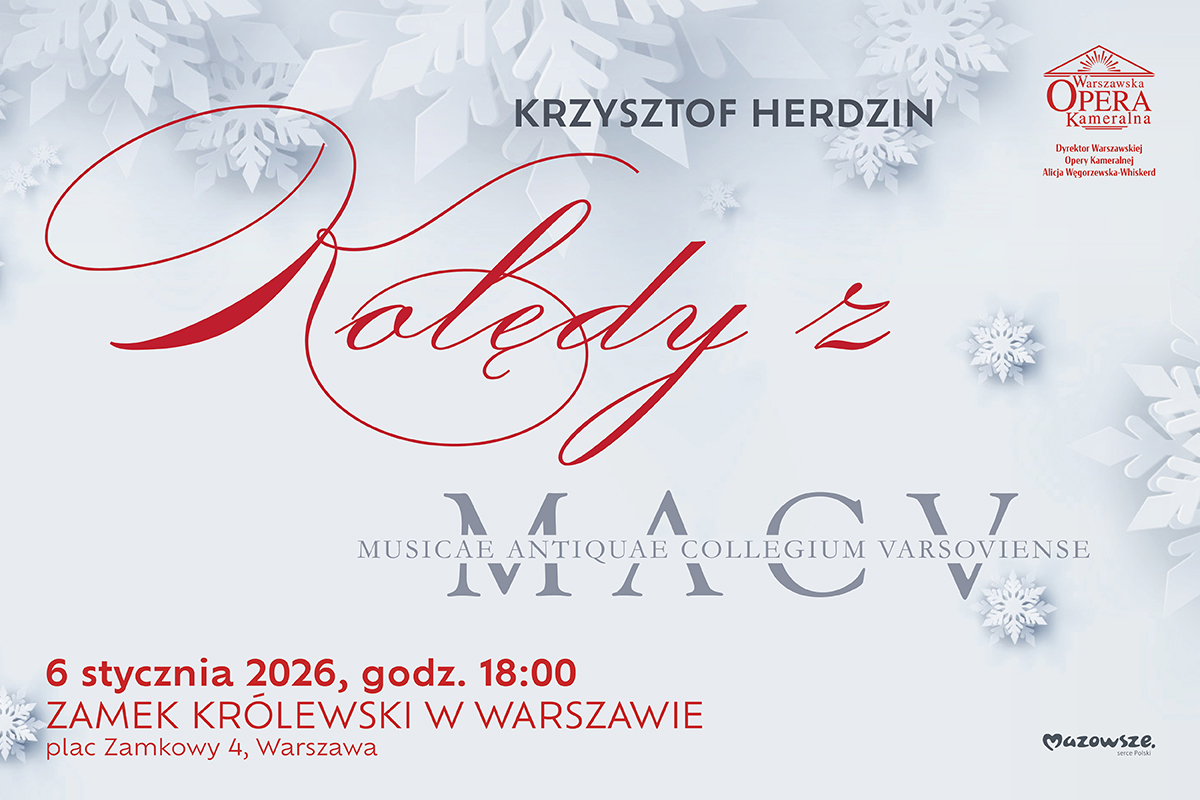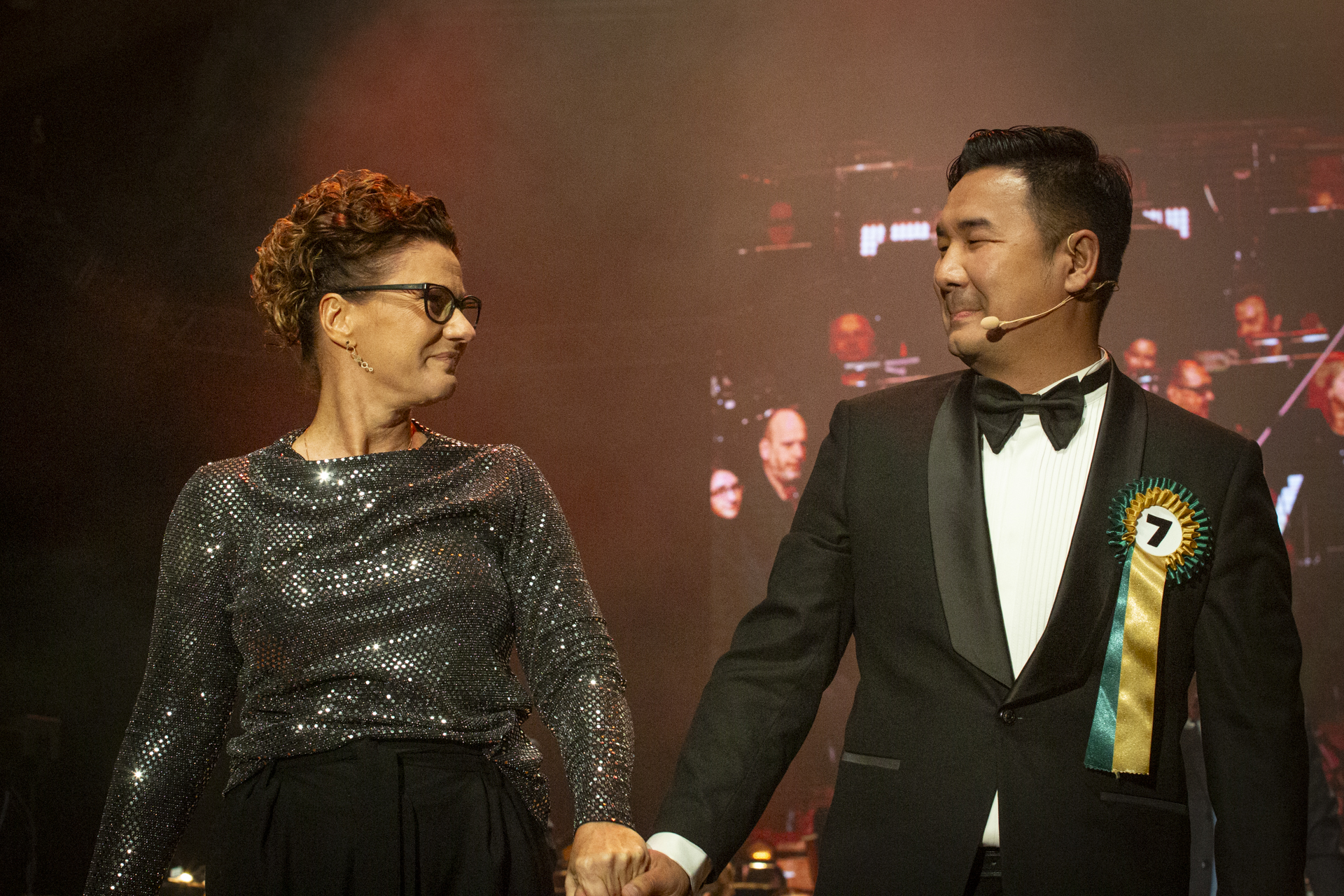 The baton isn’t everything – Agnieszka Nagórka takes the artistic helm at the Castle Opera
The baton isn’t everything – Agnieszka Nagórka takes the artistic helm at the Castle Opera
“The hands are not the most important thing… What matters more are the eyes, the face and direct contact with the ensemble,” says Agnieszka Nagórka, who as of October 1 serves as the Deputy Director for Artistic Affairs at the Castle Opera in Szczecin. How does she see herself as a conductor, and how does she build a coherent artistic vision with her performers? About working with the orchestra and singers, about the emotions that arise between the baton and the sound – a conversation with a conductor for whom music is dialogue and the stage an emotional encounter, by Magdalena Jagiełło-Kmieciak.
Let’s start with the baton. A conductor – leader, guide, psychologist? Do you have your own private definition of a good conductor?
A conductor should move people. It’s natural that they act as a leader and guide who conveys their own artistic concept to the orchestra. The main idea that should guide any performing artist is to render the composer’s intentions as faithfully as possible. A conductor’s individual work involves asking numerous questions and seeking answers that shape the interpretive decisions made along the way. It requires careful reflection on many elements of the work – for example, tempo and the relationship between tempi. The score is, by nature, incomplete and allows for many possibilities in articulation, dynamics, and phrasing.
So it leaves plenty of room for creativity?
Of course. Even the most meticulously detailed scores still offer space for individual, unconventional interpretation. In the case of operatic works, it’s particularly important to bring out both the theatricality embedded in the music itself and the expressive means of musical imagery. Interestingly, performing the same piece again after some time doesn’t exclude a renewed creative engagement with the score and its analysis. Revisiting a work gives one the chance to discover new counterpoints and find new solutions. It’s crucial for this process to take place before rehearsals begin, so the conductor can properly plan the rehearsal schedule – both the overall cycle and each session in sequence – to make the best use of the musicians’ and singers’ potential. The conductor’s positive attitude and encouragement to take on new challenges are of great importance! The pace of work must also be appropriate to use the ensemble’s concentration efficiently. Finally, the conductor must take responsibility for their own decisions and actions.
What is the main duty of an opera conductor?
An opera conductor works not only with the orchestra but also with the ballet company, soloists and chorus. The vocal apparatus is capricious, and singers’ conditions vary from one performance to another – which requires vigilance and sometimes adjustment of tempi during the show. The opera conductor’s task, beyond working with the performers, is also to collaborate with all the stage creators. They must keep track of the director’s ideas to ensure the production remains faithful to the composer’s intent. The conductor must also watch over the stage designer’s work so that unfortunate set constructions don’t disturb the acoustics or block singers’ line of sight to the podium.
In other words, they focus on many elements that ordinary audiences never see, since they don’t attend rehearsals.
Exactly. The conductor should even monitor costume designs to make sure they don’t interfere with the singers’ ability to perform.
In our conversations you’ve often said, “I’m a woman.” How do you feel as a woman in what’s still largely a male world of conducting?
“There is no logical reason to stop women from conducting. The baton isn’t heavy. It weighs about an ounce. No superhuman strength is required. Good musicianship is all that counts.” Those are the words of the wonderful conductor Marin Alsop, a true icon in the fight for equality in our profession. I must admit that my own experiences as a woman conductor have, fortunately, been very different. In working with ensembles, I always strive to be very well prepared. I had the great fortune of studying conducting under the distinguished Professor Antoni Wit, who not only gave me a solid technical foundation but also spent much time discussing how to work effectively with orchestras. The hands, as I’ve said, are not the most important thing – more important are the face, the eyes, and direct contact with the ensemble.
And that’s how you build your relationship with singers?
Yes. I’ve learned a great deal about good communication between conductor and singer from the accounts of great soloists who worked with Herbert von Karajan, and from Professor Wit, who had the honor of being his assistant. He often quoted singers who said they felt guided by Karajan while still enjoying freedom in phrasing and breathing. There’s no doubt that it is the conductor who should lead the singer – not follow helplessly behind. When all the interpretative nuances are worked out during rehearsals and a balance is reached, the conductor is never caught off guard: they know the singer’s expectations and capabilities and can guide them while ensuring comfort and confidence on stage.
Working with artists must be quite an adventure – they’re all strong personalities. What do you find most challenging in this work, and what keeps you coming back to rehearsals?
When I come to a rehearsal, I bring a well-thought-out interpretation and clear ideas. Yet in working with artists, I always respect their individual vision.
So, flexibility?
Exactly – flexibility. I try to listen to the singer or instrumentalist, understand their perspective, and give space for their creative expression. My goal is to develop a shared vision. I deeply care about creating that unique atmosphere when everyone feels like part of one organism – when we all beat with one heart.
Let’s take a step back. Do you remember your first rehearsal with a full orchestra? What surprised you, and what made that “one heart” beat as it should?
My first contact with an orchestra came during a conducting workshop led by Professor Wit with the Polish National Radio Symphony Orchestra. Being able to conduct one of Poland’s leading symphonic ensembles was a huge honor – and a great pleasure! The task for participants was to conduct pieces without any prior discussion of interpretation. Quite a challenge – we had to communicate with the orchestra solely through gesture! That experience allowed me, for the first time, to feel the orchestra’s feedback — to understand which gestures were effective and which were counterproductive.
And that led to your triumph at the International Competition for Opera Conductors in Orvieto, Italy, in 2008.
The best moment in Orvieto was hearing my name announced – followed by “Poland”! The competition drew 46 conductors from around the world. It’s a unique contest, as participants conduct only operatic works – with orchestra, chorus, and soloists. During the competition I conducted Pietro Mascagni’s “Cavalleria rusticana.” It’s crucial, in such a setting, to focus entirely on yourself and your task – to stay with the music and never let it slip from your hands.
If you could conduct only one work, what would it be?
Puccini’s music has always held a special place in my heart. As a conductor, I’m fascinated by how precisely he marks performance details in his scores. So perhaps “Madama Butterfly”? I’m a woman, and the story of Cio-Cio-San – her self-sacrifice for love and her struggle to maintain dignity in the face of suffering – moves me deeply.
Taking on the new position of Artistic Director at the Castle Opera must be quite a leap?
Conducting is my passion, my adventure, my calling. But the role of Artistic Director brings many new challenges – choosing repertoire, developing the artistic ensembles, planning educational activities and creating a long-term strategy that gives the theatre its own identity and distinctive profile. My top priority is maintaining high artistic quality – not just in premieres, but in all performances. That requires systematic, professional work to build trust and a shared artistic language across the teams. I want to demystify opera and ballet – to show they’re not incomprehensible or elitist, but deeply personal and emotional forms of art.
In conclusion, what dreams do you hold for the Castle Opera, and what role should it play in the cultural landscape?
I’d like the Castle Opera to be a place where talented young singers make their debut. In November, I’ll have the honour of serving on the jury of the Bogdan Paprocki International Vocal Competition, and I hope to “discover” some gems there. For me, theatre is above all about collaboration. In my daily work, I want to create opportunities and a supportive environment for artists’ growth. Art can only emerge where there is acceptance. I also dream that – just as Szczecin audiences once flocked “to see Irena Brodzińska” – they will now attend to enjoy the soloists we have cultivated and promoted.
Thank you for the conversation.






